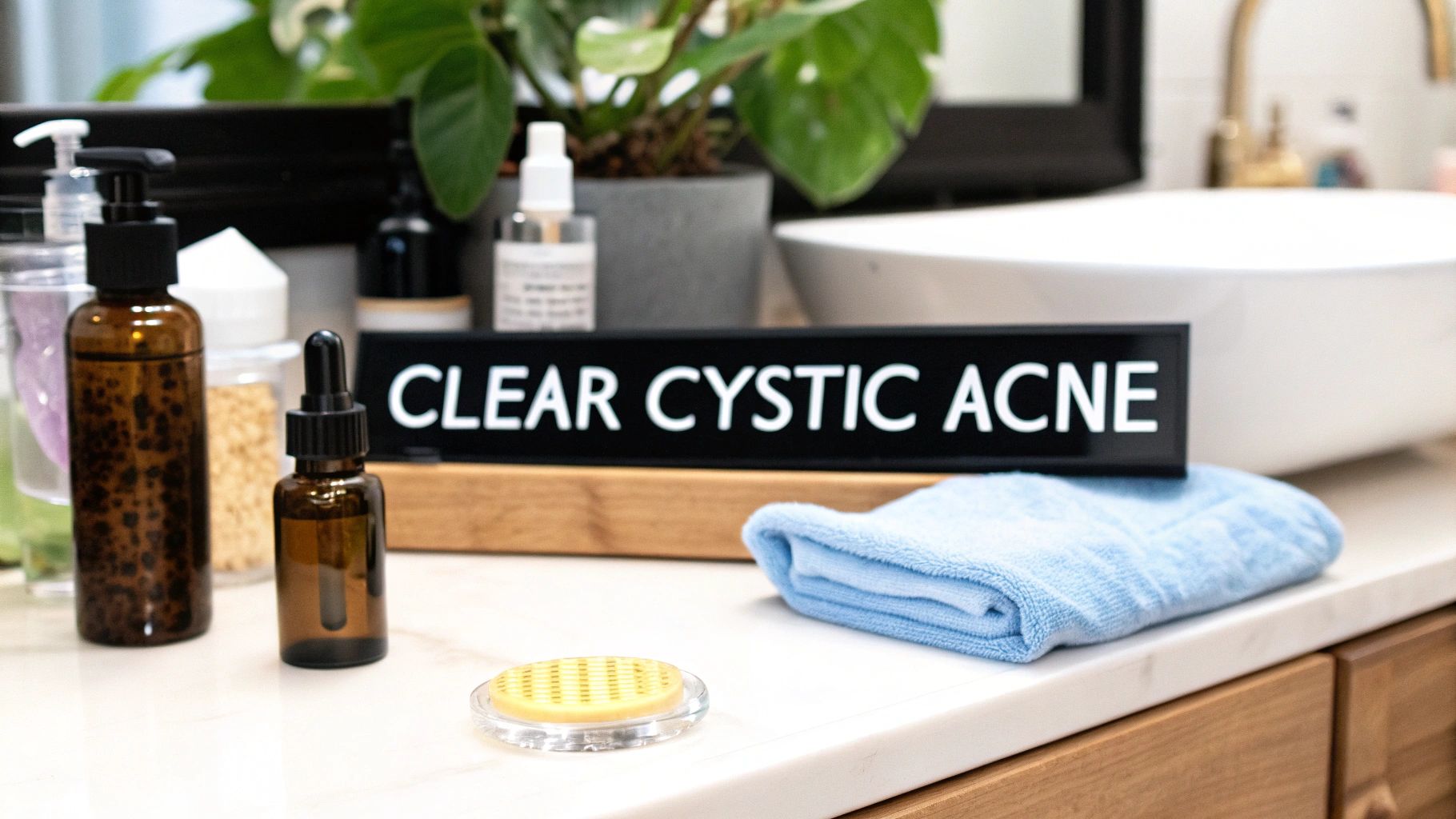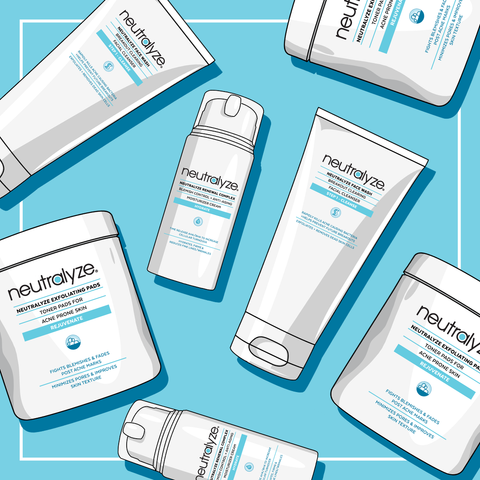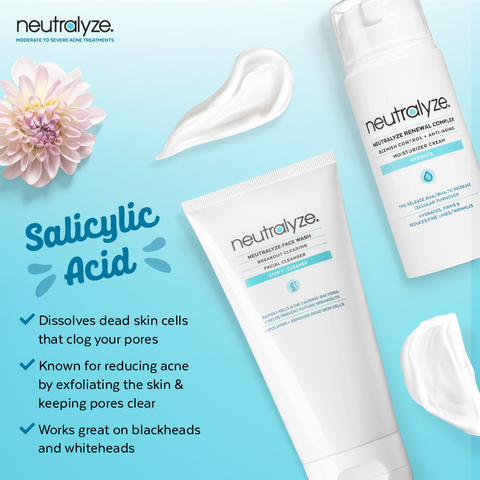How to Clear Cystic Acne Fast: Quick Tips & Tricks

When a deep, painful cyst starts to surface, what you do in the first 48 hours is everything. The real secret to clearing cystic acne quickly isn't about harsh attacks; it's about immediately calming the raging inflammation. That means being incredibly gentle, using the right spot treatment, and applying a cold compress to take down swelling and pain before it gets out of control.
Your Immediate Action Plan for a New Cyst
You feel it before you see it—that familiar, throbbing pressure deep under your skin. Anyone who's dealt with cystic acne knows that dreaded sensation. A cyst isn't like a regular pimple; it's a deeply trapped, inflamed sac of oil and bacteria. Your gut reaction might be to scrub it into submission, but trust me, that's the fastest way to make it angrier and risk a permanent scar.
Instead, think of the first 24-48 hours as damage control. This is your emergency guide for getting ahead of the problem when your skin declares war.
Calm the Inflammation and Reduce Swelling
Your absolute first priority is to dial down the intense inflammation that causes all that pain and redness. Going in aggressively will only make things worse, but a gentle, strategic approach can jumpstart the healing process.
- Bring in the Cold: Grab an ice cube or a cold pack and wrap it in a thin, clean cloth (never apply ice directly to your skin). Gently press it against the cyst for 5-10 minutes at a time, a few times throughout the day. This simple trick is a game-changer; it constricts blood vessels, which dramatically reduces swelling and helps numb that awful throbbing pain.
- Avoid Heat at All Costs: While a warm compress might help a regular whitehead come to a head, it's the absolute wrong move for a cyst. Applying heat can actually rev up the inflammation and make that underground monster even bigger and more painful.
Treat Without Causing More Irritation
The spot treatment you choose is critical. Forget those old-school, chalky drying pastes that just sit on the surface and cause a flaky, irritated mess. You need ingredients that can actually get down to where the problem is. Look for formulations, like those from Neutralyze, that are built to deliver powerful ingredients deep into the pore without stripping your skin. That’s the key to healing fast.
A cystic blemish is like a submarine—it's meant to stay under the skin. Your goal is not to force it out, but to help your body calm the inflammation and reabsorb it. Trying to pop it will only cause it to rupture underneath, spreading the infection.
Because cystic acne forms so deep and carries a high risk of scarring, clearing it often means bringing in the heavy hitters, like prescription medications. A dermatologist can perform an intralesional corticosteroid injection, which can shrink a monster cyst in just 24 to 48 hours. But every dermatologist will tell you the same thing: never, ever try to pop a cyst yourself. You’ll just worsen the inflammation and almost guarantee a scar. You can find out more about the clinical approaches to severe acne from the American Academy of Dermatology.
When you're in the middle of a flare-up, it helps to have a quick reference guide. Here's a simple checklist to keep you on the right track.
Immediate Cyst Response Checklist
| What You Should Do | What You Must Avoid |
|---|---|
| Apply a cold compress for 10 minutes. | Don't touch, pick, or squeeze the cyst. |
| Cleanse the area with a gentle wash. | Stay away from harsh scrubs or exfoliants. |
| Apply a targeted spot treatment. | Avoid applying heat or warm compresses. |
| Keep the area hydrated and moisturized. | Don't use thick, pore-clogging concealers. |
Following these simple rules can drastically cut down the healing time and help you avoid the lasting damage that makes cystic acne so frustrating.
The image below breaks down the three-step process that leads to a cyst forming in the first place.

Understanding this cycle—from hormonal shifts to blocked pores and deep-seated inflammation—is the first real step toward finally breaking it.
Why Cystic Acne Is So Stubborn

Before you can get rid of cystic acne for good, you have to understand exactly what you're dealing with. This isn't your average whitehead or blackhead that sits near the surface. A cystic blemish is a deep, painful inflammation bomb that goes off far beneath the skin.
It all starts when a nasty combination of oil, dead skin cells, and bacteria gets trapped way down in a hair follicle. This creates the perfect breeding ground for P. acnes bacteria, which triggers a major immune response from your body. The result? A tender, swollen, fluid-filled sac that can stick around for weeks and laugh off most topical treatments.
Hormones and Genetics Are Major Players
So, why do some people get a few minor pimples while others are stuck battling these deep, painful cysts? It often comes down to two main culprits: hormones and genetics.
Hormones, especially androgens, are a huge factor. These hormones kick into high gear during puberty but also fluctuate throughout our adult lives. When they surge, they tell your glands to produce more oil, which dramatically increases the chances of a deep blockage forming.
Your family tree plays a part, too. If your parents struggled with severe acne, there's a good chance you might be genetically predisposed to it as well. Your DNA can dictate everything from your skin's oil production to how intensely your body reacts with inflammation. For a deeper dive, you can learn more about how to https://www.neutralyze.com/blogs/news/how-to-treat-severe-acne.
You’re not just fighting a blemish; you’re managing a deep-seated inflammatory event. The key to winning is using ingredients that can penetrate deeply to soothe irritation and clear the pore from within, rather than just drying out the surface.
This is exactly why a well-thought-out formula makes all the difference. At Neutralyze, we understand this science intimately. Instead of just treating the surface, our products use a sophisticated multi-patented delivery system for key ingredients like Mandelic and Salicylic Acid. This technology ensures the actives travel deep into the pore to get to the root of the inflammation, calming things down before lasting damage, like scarring, can occur.
A Growing Global Concern
If it feels like you're seeing more people with acne than ever before, you're not imagining it. The global prevalence of acne is on the rise.
Data from a recent 2025 study highlights a sharp worldwide increase in acne cases among young people between 1990 and 2021. This isn't just a personal battle; it's a massive, widespread issue that makes finding effective, science-backed skincare more important than ever.
Building Your Anti-Acne Skincare Arsenal

When you're desperate to clear up cystic acne, the first instinct is often to launch an all-out assault on your skin. I've seen it time and time again—people piling on the strongest products they can find, hoping to obliterate the breakouts. But this "scorched earth" strategy almost always backfires, leaving skin not just angry and broken out, but also painfully irritated, red, and flaky.
The real secret to getting clear fast isn't about brute force. It's about being strategic. You need a well-curated arsenal of ingredients that work together, not against each other, to calm the chaos and clear your skin from the inside out.
The Dynamic Duo: Mandelic and Salicylic Acid
Let's talk about the ultimate one-two punch for cystic acne, and the core of the Neutralyze philosophy: Mandelic Acid and Salicylic Acid. While they're both exfoliants, they play very different—and very complementary—roles in your routine. Using them together is a game-changer.
Salicylic Acid is a Beta-Hydroxy Acid (BHA), and its superpower is that it’s oil-soluble. This means it can actually dive deep down into your pores, past the oil, and dissolve the gunk (sebum and dead skin cells) that's causing the blockage in the first place. It’s your deep-cleaning specialist, essential for tackling those painful, under-the-surface cysts.
Mandelic Acid, on the other hand, is an Alpha-Hydroxy Acid (AHA) that works its magic on the skin's surface. What makes it special is its larger molecule size compared to other AHAs like glycolic acid. It penetrates the skin more slowly and gently, making it perfect for sensitive or easily-irritated acne-prone skin. It sweeps away dead cells and refines texture without causing a major freak-out.
When you use them together, you get a complete solution. Salicylic acid goes deep to unclog the pore, while mandelic acid works on the surface to keep things smooth and clear. This dual-action approach is exactly what we’ve focused on perfecting at Neutralyze. Our formulas are designed to deliver these two actives in perfect balance for maximum clearing power with minimal irritation.
The Power of Smart Formulations
It’s one thing to have great ingredients, but it’s another thing entirely to make them work together effectively. A truly great acne-fighting product is a masterclass in formulation science. You need active ingredients at concentrations that are strong enough to make a difference but also gentle enough that you can use them consistently without wrecking your skin barrier.
The goal of a smart skincare routine isn't to punish your skin into submission. It’s to create an environment where healing can happen—an environment that is clear, calm, and balanced.
This philosophy is at the core of everything we do at Neutralyze. We build sophisticated formulas that respect your skin while aggressively targeting breakouts. By pairing potent actives with our advanced Nitrogen Boost® skincare technology, our products work with your skin, not against it, to dramatically reduce redness and irritation. This kind of intelligent design is what helps knock down the inflammation that makes cysts so painful and can even help prevent the dark marks they leave behind.
Here’s a quick rundown of the key ingredients you should have in your corner.
Cystic Acne Ingredient Cheat Sheet
This table breaks down the top ingredients for fighting cystic acne, what they do, and why they are so essential for your routine.
| Ingredient | What It Does | Why It Works for Cysts |
|---|---|---|
| Salicylic Acid (BHA) | Deep cleans and unclogs pores | Being oil-soluble, it penetrates deep into the pore lining to dissolve the plugs that cause cysts. |
| Mandelic Acid (AHA) | Exfoliates the skin's surface and has antibacterial properties | Gently removes dead skin cells from the surface, preventing pores from clogging. It's less irritating than other AHAs. |
| Benzoyl Peroxide | Kills acne-causing bacteria (P. acnes) | A powerful antibacterial agent that reduces the bacteria inside the follicle, directly targeting a key cause of inflamed acne. |
| Niacinamide | Calms inflammation, regulates oil, and strengthens the skin barrier | Reduces the redness and swelling associated with cysts and helps prevent post-acne marks by supporting skin health. |
| Retinoids | Increases cell turnover and prevents clogged pores | Speeds up the rate at which your skin sheds old cells, preventing the blockages that lead to cysts from forming in the first place. |
Ultimately, building your skincare arsenal around smart, synergistic formulations is the fastest and most sustainable path to clear, healthy skin that actually stays that way.
Your Daily Routine for Fast and Lasting Results

Having the right ingredients is one thing, but consistency is what really gets rid of cystic acne and stops it from coming back. Think of it this way: a simple, twice-a-day routine sends a constant signal to your skin to calm down, clear up, and find its balance. This isn’t some complicated, 10-step ordeal. It’s a targeted plan for morning and night.
Your morning routine is all about gentle cleansing and putting up a shield against whatever the day throws at you. Then, your evening routine is where the heavy lifting happens—focusing on deep treatment and repair while you get your rest.
The A.M. Routine: Protection and Prevention
The goal in the morning is to start with a clean, calm canvas. There's no need to go overboard here; your skin has been recovering all night. All you're really doing is washing away any excess oil that built up overnight and prepping your skin for the day.
- Gentle Cleansing: Kick things off with a cleanser that's pH-balanced. We formulated the Neutralyze Face Wash with Mandelic Acid specifically for this reason—it exfoliates just enough without stripping away your skin's natural moisture. This is key to avoiding that rebound oiliness that just leads to more breakouts.
- Lightweight Hydration: Yes, even oily and acne-prone skin needs moisture—badly. A good non-comedogenic moisturizer (the kind that won't clog your pores) is essential for keeping your skin barrier healthy. A weak barrier is like leaving the door wide open for more inflammation and irritation.
- Sunscreen is Non-Negotiable: The sun is not your friend when you're dealing with acne marks. Sun exposure will darken those post-cyst red and brown spots, making them linger for months. Your best line of defense is a broad-spectrum sunscreen with an SPF of 30 or higher.
Following these simple steps in the morning sets your skin up for success, ensuring it's protected and ready for your nighttime treatment to do its job.
The P.M. Routine: Treatment and Repair
Nighttime is when your skin goes into full-on repair mode. This makes it the perfect opportunity to hit it with targeted treatments that can work their magic without being disturbed. This is where you deploy your most powerful, cyst-fighting ingredients.
First things first, you have to get your skin completely clean. Wash away every last bit of makeup, sunscreen, and grime from the day. If you skip this, your treatment products can't penetrate properly.
Once your skin is clean and dry, it's time for the main event.
Pro Tip: Don't just dab product on the cyst you can see. Apply a thin layer of your treatment, like the Neutralyze Clearing Serum, over the entire area where you tend to break out. This helps knock out those tiny, invisible micro-comedones before they have a chance to turn into full-blown cysts.
After giving the treatment a minute to sink in, always follow up with that non-comedogenic moisturizer. This step is critical. Active ingredients like Salicylic Acid can be drying, and skipping moisturizer will only lead to irritation—which just adds fuel to the inflammatory fire. This final step seals in moisture and helps your skin heal overnight, so you can wake up to a calmer, clearer complexion.
Beyond the Bathroom Sink: Lifestyle Habits for Clearer Skin
A solid skincare routine is absolutely essential, but what you do in the other 23 hours of the day is just as critical for getting rid of those deep, painful cysts quickly. Think of your body as a complex system. When something's off internally, your skin is often the first place to send up a red flag. To really accelerate healing, we need to create an environment inside your body that actively fights inflammation.
It's no secret that what you eat can show up on your face. While I'd never recommend a super-restrictive diet—they just don't work long-term—making some smart, anti-inflammatory swaps can make a world of difference. This isn't about deprivation; it's about crowding out the bad stuff with more of what your skin truly needs to heal.
Eat to Heal Your Skin from Within
Let’s reframe this. Instead of thinking about what you need to cut out, focus on what you can add in. Packing your diet with antioxidants and healthy fats is one of the best ways to calm the systemic inflammation that fuels cystic acne.
- Load Up on Omega-3s: Think salmon, walnuts, and flaxseeds. These are full of omega-3 fatty acids, which have been shown time and again to help cool down inflammatory skin conditions.
- Eat a Colorful Plate: Brightly colored fruits and veggies like berries, kale, and bell peppers are your best friends. They're packed with antioxidants that protect your cells and support skin repair.
- Don't Forget Zinc: Zinc is a powerhouse mineral for skin. It helps regulate oil production and soothes irritation. You can find it in things like pumpkin seeds, chickpeas, and lentils.
Shifting your diet can be a game-changer for cystic acne. If you want to dive deeper into how cutting back on sugar can work wonders, check out the numerous benefits of a sugar-free diet for your overall health, including clearer skin.
Get Serious About Sleep and Stress
Here’s the hard truth: you can use the most expensive products on the market, but if you're constantly stressed out and barely sleeping, your skin will never fully cooperate.
Both stress and sleep deprivation cause your body to pump out cortisol. This stress hormone tells your oil glands to work overtime, which is the last thing you want when you're battling cysts.
Seriously, aim for 7-9 hours of quality sleep each night. This is when your body goes into full-on repair mode, mending damaged skin cells and calming inflammation. Even just a few minutes of meditation or deep breathing exercises during your day can help lower those cortisol levels and keep stress breakouts from popping up.
The thing about acne is, it's a deeply personal battle, but you're not fighting it alone. It's a global experience, and understanding the bigger picture can be empowering.
A recent 2024 study found that acne affects about 28.3% of young adults worldwide. That number changes dramatically based on things like genetics, environment, and even the kind of healthcare people can get. It’s a powerful reminder of why a one-size-fits-all approach just doesn’t work. The real key to seeing fast, lasting results is combining a targeted skincare routine with these supportive lifestyle habits. You can discover more about how acne presents differently around the world.
Your Cystic Acne Questions, Answered
When you’re staring down a painful, deep pimple, the questions can really start to pile up. It’s easy to feel lost in a sea of conflicting advice. Let’s cut through the noise and get straight to the answers you need to feel back in control of your skin.
How Long Does It Really Take for a Cyst to Go Away?
I know you want it gone yesterday, but it’s important to have a realistic timeline. A single, angry cyst can stick around for anywhere from 1 to 4 weeks if you’re just relying on a consistent at-home routine.
Of course, using the right products can speed things up considerably. A system like Neutralyze, for instance, uses a powerful combination of Salicylic and Mandelic Acid to get deep into the pore and quiet the inflammation. That’s how you heal more efficiently.
If you’re in a real bind—say, a wedding or big event is just days away—a dermatologist can be your hero. A quick corticosteroid injection can often shrink a cyst down in just 24 to 48 hours.
The real win isn't just zapping one pimple. It's building a routine that stops the next one from ever showing up. Consistency is what finally breaks that frustrating breakout cycle.
Is My Makeup Making My Cystic Acne Worse?
It absolutely can, but it doesn't have to. You don't need to swear off makeup for good, but you do need to be smart about what you're putting on your skin.
Your new mantra is "non-comedogenic" or "oil-free." Look for those words on every label. It’s a sign that the product was specifically formulated so it won't clog your pores—which is enemy number one when you're fighting acne. Many of my clients have great luck with mineral-based foundations, as they tend to be much kinder to sensitive, breakout-prone skin.
Seriously, Can I Just Squeeze This Thing?
I’m going to be blunt: never, ever try to pop a cyst. It is truly the worst thing you can do. Think of a cyst as a tiny, inflamed balloon of infection deep under the skin.
When you squeeze it, that balloon almost always bursts underneath the surface, spreading all that bacteria and inflammation around. Not only will the pimple get bigger and more painful, but you're also dramatically increasing the odds of a permanent, pitted scar. Hands off! Grab a spot treatment and let your body handle the rest.
It's also common to have questions about unique situations, like finding effective pregnancy-safe acne treatments. When in doubt, especially in special circumstances, talking to a professional is always your safest bet.
When Is It Time to Call a Dermatologist?
If you've been diligently using a good over-the-counter system for 8-12 weeks and you’re just not getting the results you deserve, it’s time to make the call. Cystic acne is a legitimate medical condition, and sometimes it just won't budge without prescription-strength help.
Seeing a dermatologist isn't admitting defeat. It's the smartest, most proactive step you can take to get clear skin and—more importantly—prevent the kind of permanent scarring that severe acne can cause.
Ready to stop guessing and start seeing clear skin? Neutralyze uses a multi-patented, science-first approach to get to the root of severe acne. See why over 475,000 people trust the system to get the calm, clear skin they've been hoping for. Find out more at https://www.neutralyze.com.
Article created using Outrank


